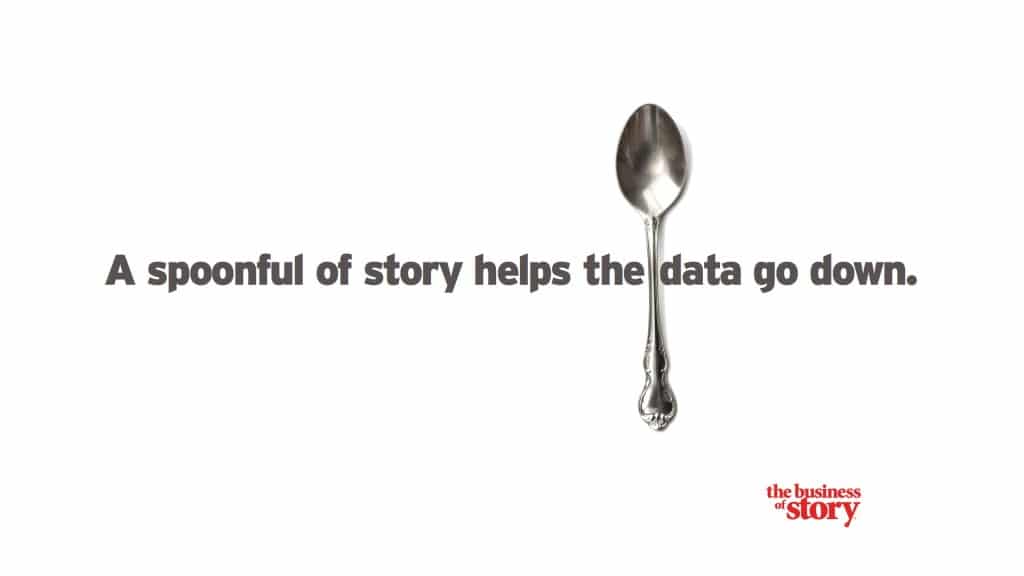
Data is the foundation for most business stories, but data is NOT the story. If we rely solely on the data as our storyline, as so many business communicators do, we lose our audiences. End of story.
Because data does just one of three things: It reports on an event that has happened, monitors an event that is currently happening, or attempts to predict an event that will happen.
Although data can be alarming, our brains are mostly interested in the event. Why? Because events can kill us. Data can’t. Therefore, data, stats and facts are fairly inert to our brains, unless they are wrapped in story.
On this week’s episode of Business of Story podcast, the founder of Creative Nonfiction and author of numerous books, including You Can’t Make This Stuff Up: The Complete Guide to Writing Creative Nonfiction from Memoir to Literary Journalism and Everything in Between, Lee Gutkind, provides tips on how to craft “true stories well told.”
One of my favorite tips Gutkind encourages every business leader to use is to think in scenes to create context around the data points you are trying to communicate. He says there is a rhythm to it.
Share a scene, another scene, a third scene, then deliver your data.
This approach, when well told, fascinates the mind, creates context around the point you want to make, and then makes the data digestible.
For instance, say a CEO is addressing her troops and she wants to underscore that although business is good, revenue margins are bad. In scene one she congratulates the sales team on beating their projections, and singles out a young team member who has been excelling.
In scene two she congratulations the production team for keeping up with demand, and she tells a funny story about a squirrel that infiltrated packaging and shut down the plant for an hour until it could be boxed up and released back into the wild (Bare with me, I’m vamping here).
In scene three she recalls a similar time in the company’s growth and how they pulled through the crunch.
Then she delivers the news that while sales are up, margins are down by 50% because of the outsourcing they have had to do. And then she enrolls her team in creating greater efficiencies throughout their supply chain to handle the new demand.
Had she led with the data, it would’ve been a bummer of a meeting. But instead, she created context and camaraderie around the current plight of the company and closed with a call to action for greater efficiency by sharing her story in scenes.
The moral: Just a spoonful of story helps the data go down.
Learn more great storytelling tips from Lee Gutkind on Business of Story podcast.












